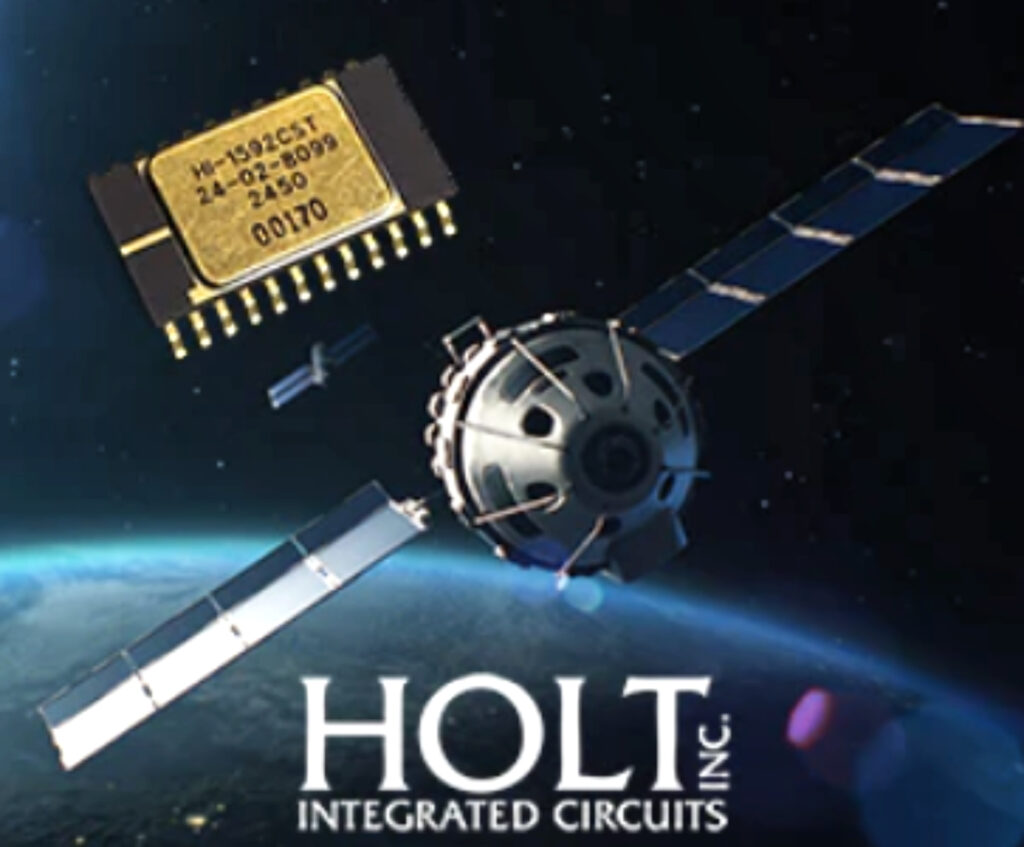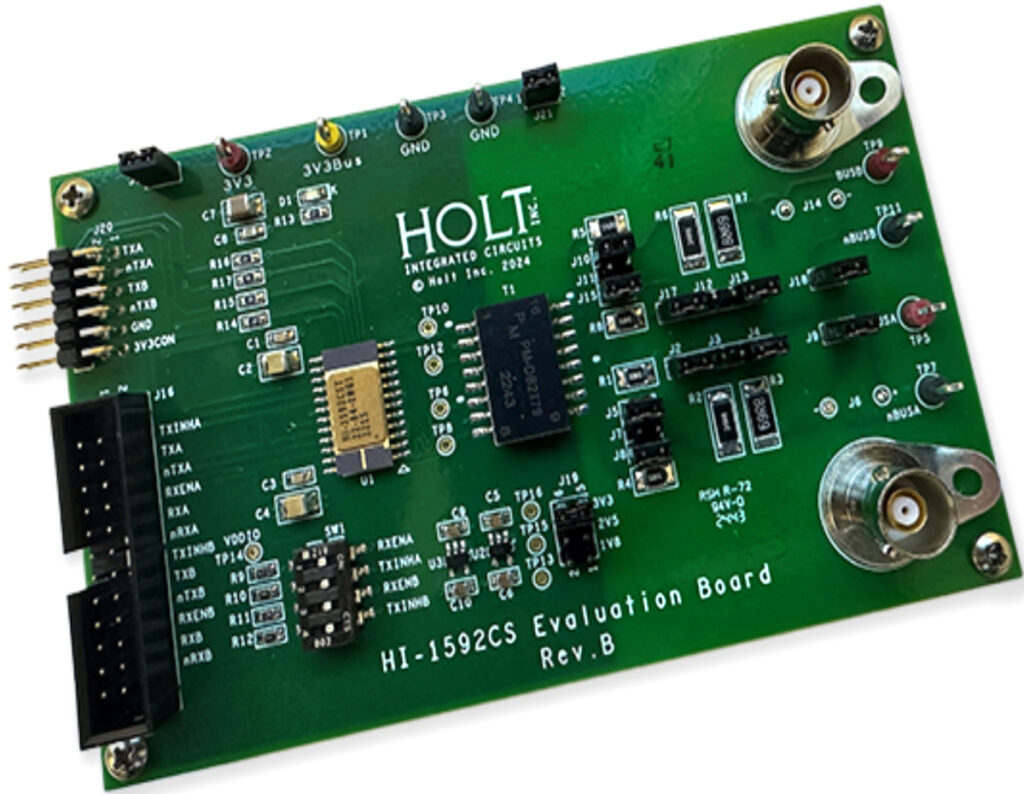
HOLT Integrated Circuit‘s HI-1592 is a radiation-hardened, hermetically packaged, MIL-STD-1553, dual transceiver that is designed for use in high reliability MIL-STD-1553 applications, such as launch vehicles, space, and high altitude aircraft.

As aircraft fly at higher altitudes or in space, they become more susceptible to exposure to cosmic rays, resulting in effects such as single-event transient (SET), single-event functional interrupt (SEFI), single event latch-up (SEL) and single event burnout (SEB), any of which could result in degradation or failure of electronic equipment. To that end, electronic equipment designed to fly in these environments needs some level of latch-up immunity or radiation hardness assurance (RHA) against the effects of cosmic rays.
The HI-1592 is designed to provide latch-up immunity up to an LET of 67.7 MeV-cm2/mg and an RHA total ionizing dose (TID) of 100 krad(Si). It is ideal for launch vehicle and high-altitude aircraft applications that use MIL-STD-1553 data bus communication. The device also features 1.8V, 2.5V and 3.3V compatible digital I/O, making it easier to interface with a broader range of FPGAs and controllers.
The transmitter takes complementary CMOS / TTL Manchester II bi-phase data and converts it to differential voltages suitable for driving the bus isolation transformer. Separate transmitter inhibit control signals are provided for each bus.
The receiver section of the each bus converts the 1553 bus bi-phase analog signals to complementary CMOS / TTL data suitable for input to a Manchester decoder. Each receiver has a separate enable input, which forces the receiver outputs to the bus idle state (logic “0”) when low.
Features
Robust Silicon-On-Insulator (SOI)
CMOS technology
RHA Total Ionizing Dose (TID) 100 krad(Si) High Dose Rate
Single-Event Effect (SEE) hardness
SEB and SEL free up to 67.7 MeV-cm2/mg SET and SEFI characterized up to 67.7 MeV-cm2/mg
MIL-PRF-38535 compliant
1.8V, 2.5V and 3.3V compatible digital I/O
Extended temperature range with optional burn-in
Applications
Launch Vehicles
Low-orbit satellites
High altitude aircraft
MIL-STD-1553 Terminals
Flight Control and Monitoring
ECCM Interfaces
Radar Systems
